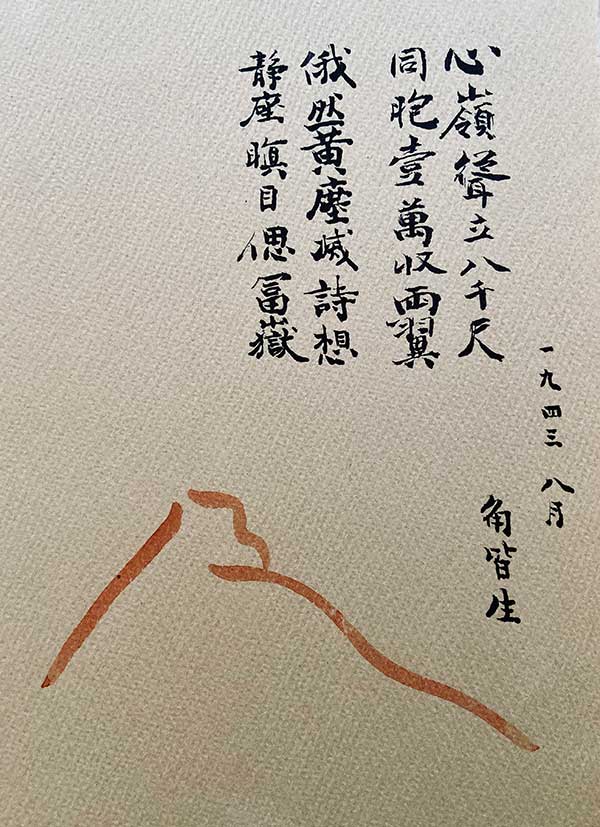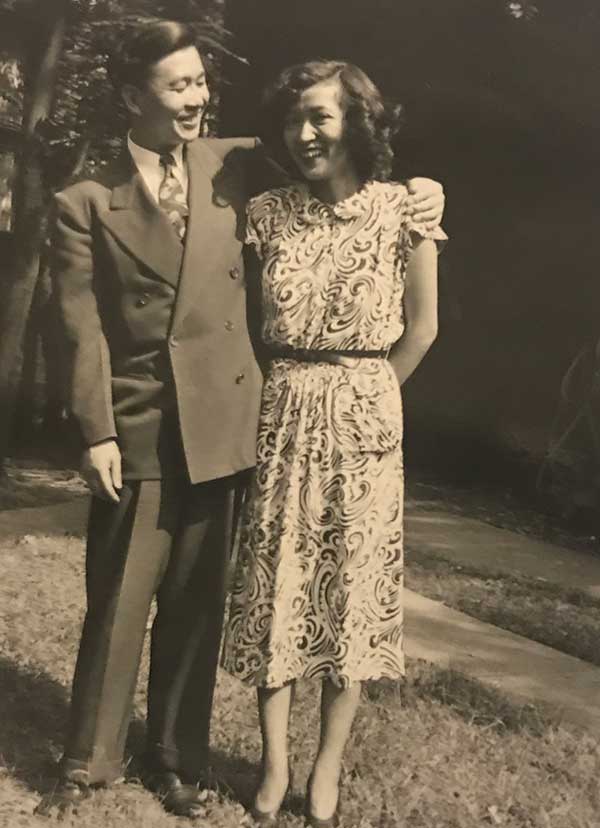Exhibit Dates: June 11 – July 30, 2022
Gallery Hours: Sat., June 18th, 12-2pm; Sat., June 25th, 2-4pm; or by appointment (call 510.865.5060 or email info@rhythmix.org)
For the health and safety of our community, Rhythmix requests that ALL guests remain masked while indoors. For Rhythmix complete COVID-19 Safety Guidelines, click here.
During WWII over 120,000 people of Japanese ancestry were uprooted from their homes, communities and jobs and involuntarily sent to live in guarded barracks – internment camps located in desolate parts of America. The images and writings in Uprooted reveal different aspects of this shared memory of loss and relocation.
Uprooted features calligraphy from the Heart Mountain Tachibana Ginsha, “standing flower poetry club,” typed letters written by newlywed May Okada while interned at Tule Lake, along with the work of contemporary artists Dana Kawano, Scott Tsuchitani and Ellen Bepp.
All three Japanese American contemporary artists are influenced by this same dark moment in history.
Dana Kawano’s Kasa Project gives visual interpretation to stories told by survivors of the Japanese American incarceration. Scott Tsuchitani investigates visual culture as dynamic process by combining poignant narrative with unexpected humor and latent stereotype. Ellen Bepp’s paper cut-outs give voice to her Japanese cultural roots while addressing issues of political identity, social injustice and displacement.
Uprooted Art & Artists
Ellen Bepp is an Oakland-based artist who draws inspiration from her Japanese ethnic roots and cultural arts traditions of Asia and Latin America. She speaks from her experience as a Japanese American, calling out for social justice, addressing the legacy of the WWII American concentration camps and the ongoing violence against Black, Brown and Indigenous peoples. Since the 1980s her mixed media work, wearable art and hand cut paper have been exhibited nationally in museums and galleries. Her cultural and humanitarian exchanges in Guatemala, Peru, Mexico, Nicaragua and Cuba inform her work which honors and addresses ancestral wisdom and issues of displacement and memory.
Image: La Venganza de los Milagros, handcut paper by Ellen Bepp, 2017.
Dana Kawano, a fine artist, illustrator, ritual wear designer and scenic/installation artist is versed in a multitude of artistic mediums. Her background encompasses the creation of ‘visual landscapes’ including illustrations, and elaborate wearable and scenic art that incorporate painting, textiles, and found materials while integrating cultural/ritual layering to tell the story.
The Kasa Project is an ongoing arts initiative which serves as a vehicle for breaking the silence of Japanese Americans, honoring their identity and promoting healing of the transgenerational trauma born of unconstitutional and xenophobic mass incarceration of 120,000 innocent people. It builds awareness and encourages fair treatment of all US immigrants.
Image: Only What You Could Carry, airbrush acrylic on canvas umbrella by Dana Kawano.
Scott Tsuchitani is an artist and PhD candidate in Cultural Studies at University of California, Davis. His art has been exhibited in eleven museums around the U.S., presented in Europe and Asia, censored by the De Young Museum and cited in such journals as Amerasia, Asian Diasporic Visual Cultures and the Americas, Early Modern Japan, and Social Policy, as well as the books Queering Contemporary Asian American Art, Asian America Through the Lens, and others.
By combining poignant narrative with unexpected humor and latent stereotype, Tsuchitani shines a light on the absurdity otherwise hidden behind the apparent naturalness of a social conditioning heavily determined by structures of dominance.
Image: Boys Love Baseball, digital print by Scott Tsuchitani, 2007.
Selections from a collection of poetry written in the WWII Heart Mountain-Wyoming internment camp, by a group of Issei, first generation Japanese immigrants, who called themselves the “Tachibana Ginsha.” The pieces show the calligraphers and visual artists working together to create a poetic image. The words and images portray a quiet dignity, and a profound insight for the beauty in life.
Tachibana Ginsha translates to “Standing Flower Poetry Group,” an apt description of a group of people surviving in the desolate lands of the relocation camps.
Image Translation:
May Okada was a fastidious record keeper, saving onion skin carbons of every typewritten letter she wrote. Her detailed observations and descriptions of daily life offer a window into an infamous time in history. In 1942, she had been married for 2 weeks before Executive Order 9066 sent Japanese Americans and their families to be incarcerated in WWII relocation camps as an act of national security.
The newlyweds were initially sent to Camp Walerga, a holding camp outside of Sacramento, then relocated to Tule Lake in the eastern Sierras. May’s letters from camp express a dry wit and appreciation for life that reveals an uplifting ability to endure the indignities and confinements of the camps both physically and spiritually.
Image: Dave and May Okada
Banner image: We Shall Rise, airbrush acrylic on canvas umbrella by Dana Kawano. In this composition the dragon represents the resolute strength of the incarcerated people, the gripping of the guard tower conveys the sense that while physically detained, the spirit prevails.




